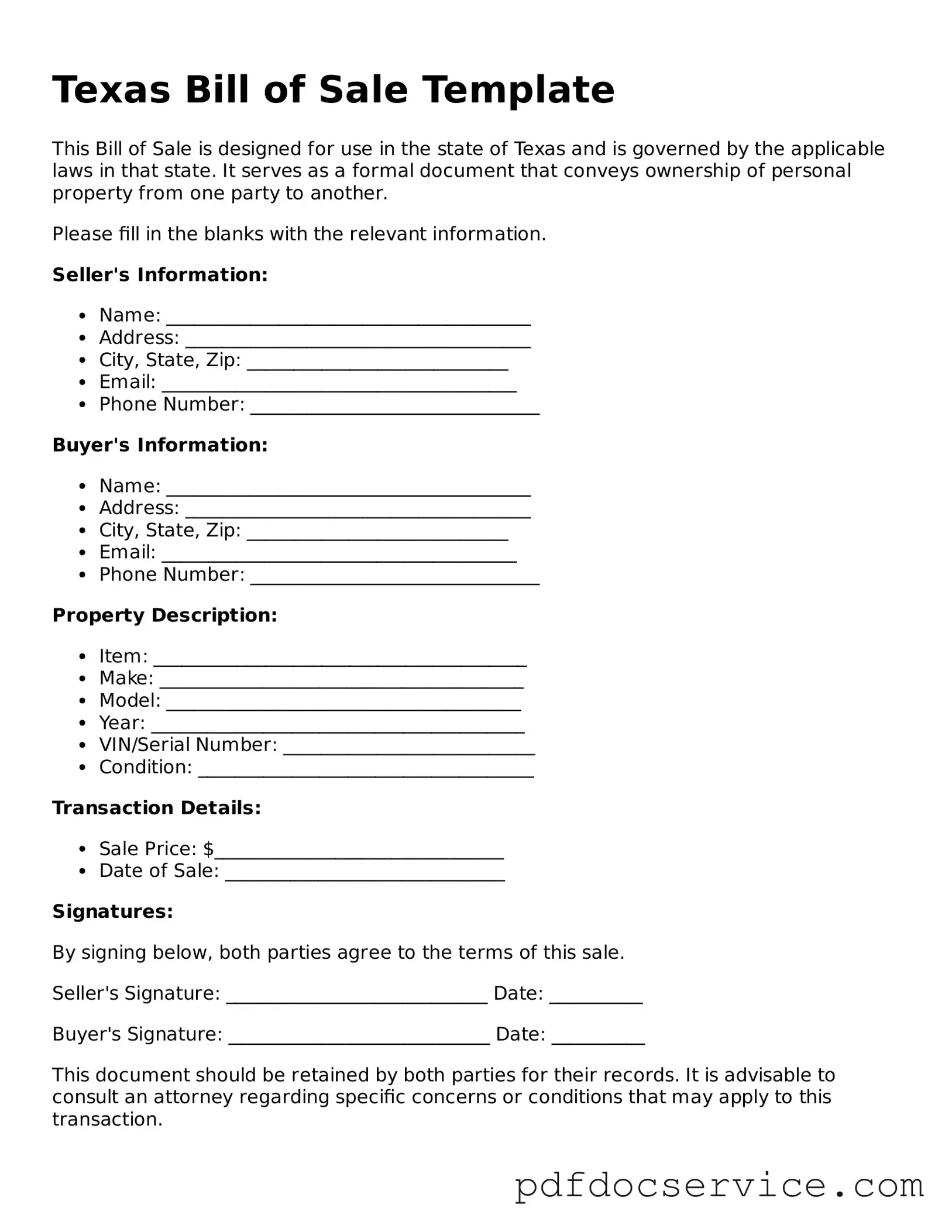Printable Bill of Sale Template for Texas
A Texas Bill of Sale form is a legal document that facilitates the transfer of ownership of personal property from one individual to another. This form serves as a record of the transaction, outlining key details such as the parties involved, the description of the item being sold, and the agreed-upon price. Understanding its importance can help ensure a smooth transfer and protect the interests of both the buyer and the seller.
Open Bill of Sale Editor
